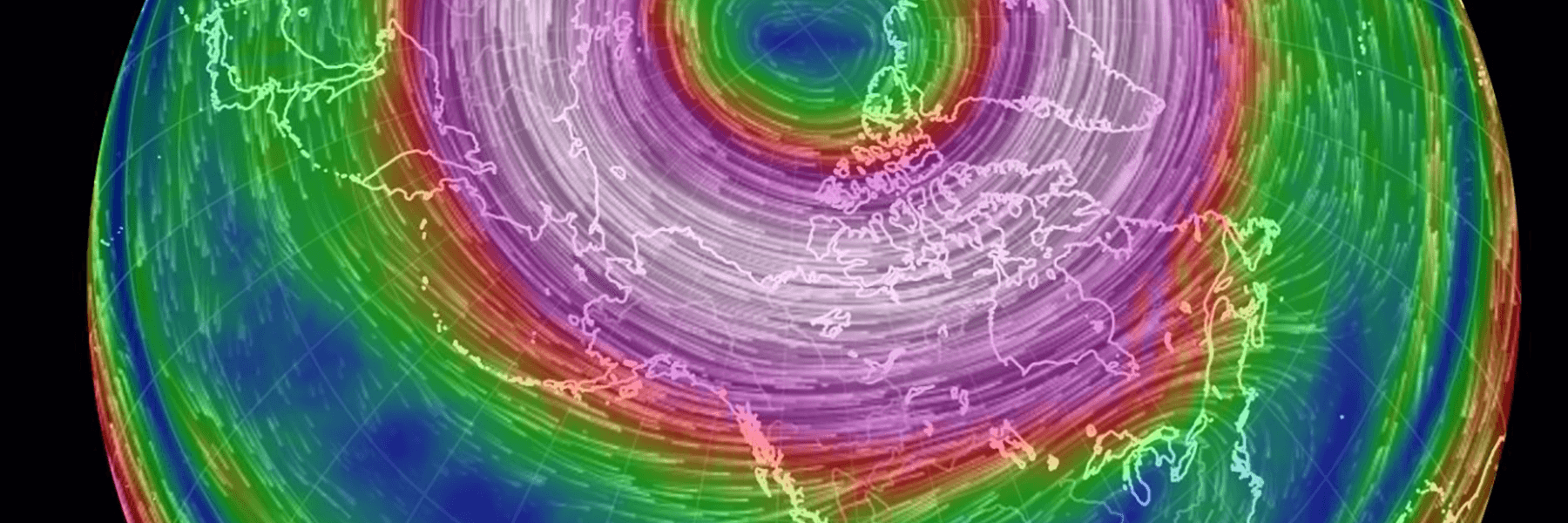New study examines the record-breaking polar vortex and related extremes during the winter of 2019/2020

In the winter of 2019-2020, westerly winds within the Northern Hemisphere polar stratosphere, known as the stratospheric polar vortex, became extraordinarily strong. This record-breaking event was tied to two other record-breaking climate extremes that were observed during the season: a very persistent positive phase of the tropospheric Arctic Oscillation, and the lowest Arctic stratospheric ozone levels ever recorded. In a new study published in a special issue of the Journal of Geophysical Research: Atmospheres, CIRES and NOAA researchers at the Physical Sciences Laboratory and Chemical Sciences Laboratory, and their collaborators, examine how this strong polar vortex developed, and how the Arctic Oscillation and ozone extremes evolved in concert.
During winter, the Northern Hemisphere circulation in the stratosphere and troposphere are closely linked. In the troposphere, phases of the Arctic Oscillation describe north/south shifts in the jet stream. Typically, atmospheric waves generated in the troposphere by weather systems and terrain spread into the stratosphere where they can disturb and weaken the stratospheric polar vortex. As a result of this coupling, extreme changes to the strength of the stratospheric polar vortex can in turn be followed by long-duration Arctic Oscillation events in the troposphere, which affect the location of the jet stream and impact patterns of surface temperatures and precipitation.
The study shows that during the 2019-2020 winter season, tropospheric wave forcing on the stratospheric vortex was unusually weak, and a unique configuration of the stratospheric polar vortex developed that reflected waves back downward into the troposphere. Both of these physical processes helped to keep the stratospheric polar vortex strong and cold, and contributed to the development of a positive Arctic Oscillation event of record persistence.
The study further illustrates that the extreme Arctic oscillation event can explain a large fraction of the observed extreme warmth that occured in the Southeastern United States and in Eurasia from January to March.
In addition, because the stratospheric polar vortex was extraordinarily strong and cold for long periods of time, conditions within it were ideal for enabling depletion of the ozone layer to take place uninterrupted, which led to the greatest ozone loss ever recorded over the Arctic.
The record-breaking strong stratospheric polar vortex, Arctic ozone loss, and persistently positive Arctic Oscillation phase during the winter of 2019-2020 represent a closely-coupled and coherent climate extreme, which emphasizes the importance of troposphere-stratosphere interactions for understanding the occurrence of these extreme events, and the need to properly simulate these interactions in subseasonal-to-seasonal forecast models.
Authors of the Journal of Geophysical Research: Atmospheres article The Remarkably Strong Arctic Stratospheric Polar Vortex of Winter 2020: Links to Record-Breaking Arctic Oscillation and Ozone Loss are: Zachary Lawrence, Judith Perlwitz, Amy H. Butler, Gloria L. Manney, Paul A. Newman, Simon H. Lee, and Eric R. Nash.
Posted: November 20, 2020